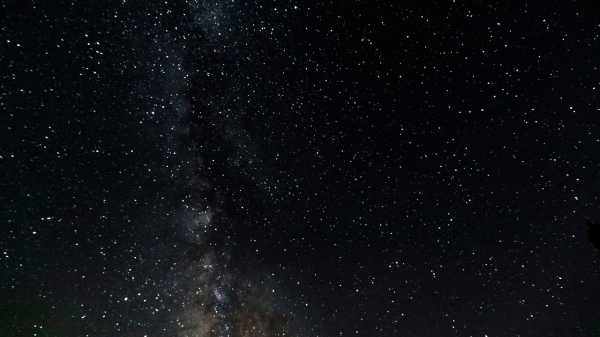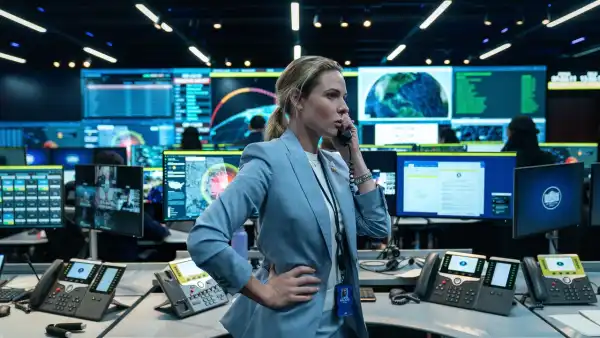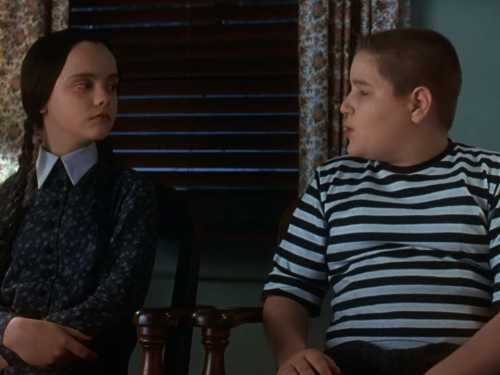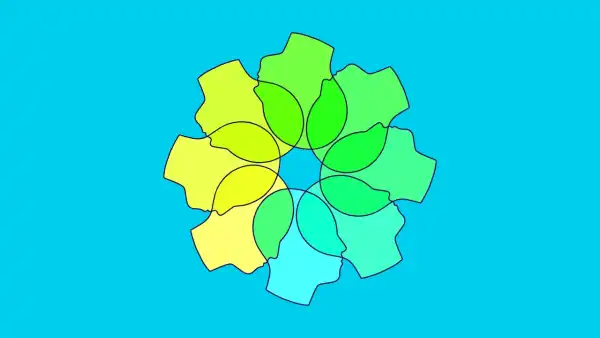
Several years ago, I tried to explain infinity to a class of fifth graders. In the story that I told them, I was preparing to eat a piece of cake when a friend walked in on me. Being polite, I gave her half. Before I could eat my half, another friend came by, so I split it again. This happened again and again—in the story, I have a lot of friends—and my snack kept getting smaller. How much cake would I have at the end of this? “None!” many of the fifth graders yelled. Together, we wrote a sum on the board: ½ + ¼ + . . . We agreed that, eventually, if you kept writing numbers forever, they had to add up to one. Then we talked about a different infinite sum that had been making its way around the Internet: 1-2+3-4+ . . . When I convinced them that it equalled ¼, I was pretty sure that their murmurs of “mmm” were not dreams of cake.
A new documentary, “A Trip to Infinity,” tries to serve up this feeling of wonder to Netflix’s massive audience. Populated by a diverse and engaging cast of mathematicians, physicists, and a stray philosopher or two, the film, by Jonathan Halperin and Drew Takahashi, explores the infinite, with its puzzles and paradoxes, not only as a mathematical construct but also as an idea that helps us calibrate the vastness of the universe and grasp what it would mean for something to go on forever, and ever, and ever. In images and interviews, the film contemplates whether there are physical manifestations of infinity, and whether it is possible for a mortal person to experience endlessness.
Why are we so intrigued by the infinite? Maybe it’s because of the tension between our finite lives and the seemingly unbounded range of our imagination, between the limits that we experience and the possibly infinite universe that we inhabit. Young people can think that life will last forever; older people, realizing that it will not, might look for a semblance of immortality in their legacies. Buzz Lightyear, in “Toy Story,” teaches kids that life is full of infinite possibilities; Hamlet, as he laments the finitude of life, remembers Yorick as a man of infinite jest. Perhaps to make sense of infinity, even just a little, is a way to feel some control and comfort in the face of life’s big questions.
Math documentaries always pose a challenge to filmmakers because mathematics does not exist in the realm of images but in the realm of ideas. How do you illustrate a complicated concept without resorting to gimmicks and distractions, or limiting your film to a sequence of talking heads? One of the best answers to that question is “Donald in Mathmagic Land” (1959), which was part of a series of science-education documentaries that Disney produced in the fifties and sixties. In less than thirty minutes, the film takes the viewer—and Donald Duck—from ancient Greeks to futuristic astronauts, introducing such concepts as number theory and geometry. Crucially, “Mathmagic Land” combines fun and fact without oversimplifying the math, and without speaking down to the viewer. Even if animated, “Mathmagic Land” is helpfully light on metaphor. So is “The Proof” (1997), the popular “Nova” documentary that captured the excitement of Andrew Wiles’s proof of Fermat’s Last Theorem.
“A Trip to Infinity” has moments of math magic. It includes, for example, a cartoon called “The Infinite Hotel,” based on a thought experiment by the twentieth-century German mathematician David Hilbert. In a voice-over by the mathematician Steven Strogatz, we learn that the hotel is occupied, yet it can always accommodate more guests—even an infinity of new guests. Strogatz explains the infinite sum that deprived me of my slice of cake, ½ + ¼ + ⅛ . . ., by describing a hotel manager who has a finite amount of time to prepare rooms for new arrivals. The film also succeeds when it trusts its engaging experts—an all-star cast that includes the physicists Janna Levin, Stephon Alexander, and Carlo Rovelli, and the philosopher Rebecca Goldstein—to find their own words for what infinity is, and what makes it endlessly interesting.
The film goes wrong, I think, when it attempts to dress up the mathematics in psychedelic animations, and when it asks experts on math and science to engage in armchair philosophy. As a viewer, I often felt as if I had been invited on an epistemological fishing expedition. In one awkward sequence, participants are handed a small black orb to contemplate, and then instructed, “Tell me what it makes you think about with infinity.” One can almost feel them squirming as they try to answer for the camera. A closing question—“Do you think that human creativity is infinite?”—similarly cries out for an edit. In other moments, the expert voice-overs are matched with animations of nesting circles and tiled spaces, the kinds of gimmicks that science-fiction movies have turned into clichés. The most intrusive animation is a train that twice interrupts the mathematician Moon Duchin, who is reflecting on what it would mean for a mathematical object like infinity to “exist.” The second appearance of the train blocks her entirely from view and rumbles over her thoughts, as though the underlying ideas aren’t interesting enough on their own. As a mathematician, I may be biased, but I think that they are.
Is the universe as infinite as we might imagine it to be? We may never know, but the reasons for that are fascinating in themselves. The surprise, the film points out, is that even a finite universe can seem infinite to its inhabitants. To explain, the viewer goes on a journey to a four-dimensional world. While some mathematicians claim the ability to visualize things in four dimensions, most of us can only proceed here by analogy: imagine that you are a dot that can only follow the path of a circle on a piece of paper. If you experience only one dimension, you might think that your universe goes on forever in a straight line. The same is true for a dot that can roam around the two-dimensional surface of a billiard ball: you might think that your world is infinite in every direction, even though we three-dimensional beings can look down at the paper or the billiard ball and recognize that each has limits. In one of the film’s best scenes, the astrophysicist Delilah Gates, speaking straight to the camera, contemplates whether our universe could be the three-dimensional equivalent of these finite spaces. You don’t need an animation to appreciate it. These kinds of human moments are the best reason to watch the film.
When I was a freshman in college, I had the kind of epiphany that “A Trip to Infinity” hopes to inspire. My life, at the time, felt limited; I was unhappy with university and uninspired by the chemistry labs that I had planned to spend my time on. One day, I wandered into my campus bookstore and pulled a math book off the shelf. I found it so transfixing that I sat down in the aisle, oblivious to the shoppers who had to shuffle their way around me. The simple act of counting, I read, could be a source of surprise. There are as many counting numbers as there are even numbers, for example—even though that seems to imply that two times infinity is exactly the same as infinity. There are just as many fractions as there are counting numbers—even though an infinite number of fractions can fit between two counting numbers. How could this be? I learned that there exists a bigger infinity, the one that you get when you try to count all the numbers that can be written as decimals. This last collection is so infinite as to be uncountable: no matter how you try to list these numbers, you’ll necessarily leave some—in fact, an infinity of numbers—out. That book, a bit worn around the edges and full of my marginalia, is in front of me as I type this. For me, it was a portal into a world of wonder. I am still there. ♦
Sourse: newyorker.com






